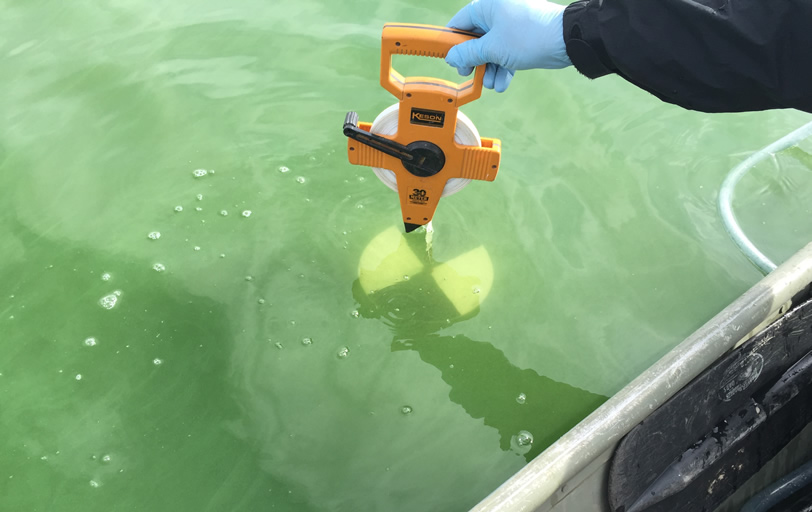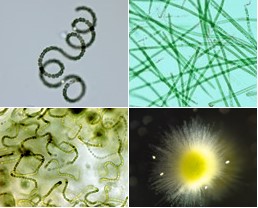Algal Blooms in Maine Lakes

What are algal blooms?
Algae are small plant-like organisms. They can be found in nearly every body of water. These organisms are an important part of a lake community. However they can occasionally grow quickly (bloom) and take over a lake. Algae can form thick mats or scum, covering large portions of a lake or pond. In addition to disrupting the beauty of lakes, these blooms can produce toxins that are harmful to human and animal health.
What makes a bloom harmful?
Most freshwater Harmful Algal Blooms (HABs) are caused by a type of bacteria called cyanobacteria. Under certain conditions, the cyanobacteria can quickly multiply and many species of the bacteria can produce toxins that can cause rashes, nausea, diarrhea, and in severe cases death.
For more information on cyanobacteria and their toxins in Maine go to the cyanobacteria page.
Maine DEP considers an algal bloom a:
- Nuisance when water clarity is 2 meters (6.6 feet) or less
- HAB when water clarity is less than 1 meter (3.3 feet)

What should I do if I suspect a bloom?
The water at my lake looks strange, I think there is a bloom, what should I do?
- What does the water look like? Check these descriptions.
- If you have a bloom to report, go to the DEP Report Blooms page.
What can I do to protect my lake from blooming?
High levels of nutrients such as phosphorus and nitrogen are often necessary for HAB formation. In Maine most of these nutrients are washed into our lakes during storms and snowmelt events where water washes over lawns, farm fields, roads, driveways, and construction sites.
There are many ways you can keep your lake safe:
- Reduce soil erosion by seeding and mulching bare areas.
- Maintain a ribbon of woody vegetation between your property and the lake.
- Direct water from roofs and driveways to stable vegetated areas.
- Reduce or eliminate the use of fertilizer on lakefront property. If you must fertilize, apply fertilizers in the correct amount and only when necessary.
- Regularly maintain your septic system.
Volunteer in your community. Here are some resources:
- Lake Stewards of Maine
- Lakes Environmental Association
- To join a local lake association, follow this link to see a list of lake associations
- Consider getting your property certified as LakeSmart
Where can I get more information on Maine Lakes?
- A helpful site to visit is Lakes of Maine. There you can look up water quality information on specific lakes.
- Maine Lakes Society is a volunteer organization with information on many lake protection resources.
- DEP’s helpful tips for shorefront property owners